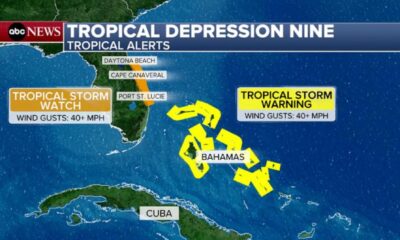News
US Inflation Reaches Lowest Point in Over Three Years

America’s inflation rate continued to slow in September, achieving the lowest level in over three and a half years, as reported by the U.S. Bureau of Labor Statistics on Thursday. The Consumer Price Index (CPI), which assesses price changes in a basket of goods and services, increased by 2.4% for the 12 months ending in September. This figure exceeded economists’ expectations set by FactSet, which predicted a 2.3% rise, making this the slowest pace of inflation since February 2021.
On a monthly basis, CPI rose by 0.2%, consistent with August’s increase and slightly elevated compared to economists’ projections of a 0.1% rise. This increase reflected ongoing challenges in controlling high inflation, with certain price categories, such as food and shelter, continuing to exert upward pressure.
“High inflation is dying, but not dead,” remarked Olu Sonola, head of U.S. economic research at Fitch Ratings. A surge in food prices, partly attributed to a widespread bird flu, alongside easing, yet persistent, shelter-related inflation, contributed to the CPI’s upward movement despite declining gas prices.
Factoring out the volatile food and energy sectors, core CPI saw a 0.3% increase in September, raising the yearly rate to 3.3% from the stable 3.2% of the previous two months. “September’s CPI report has good news and bad news for the Fed,” commented Eugenio Aleman, chief economist at Raymond James, noting the reduction in shelter costs.
Despite these pressures, experts suggest that inflation trends are moving favorably, with pandemic-era price drivers subsiding and demand normalizing. Housing inflation, particularly in the “shelter” category that contributes significantly to overall CPI, recorded its lowest annual rate since February 2022.
Tyler Schipper, an associate professor at the University of St. Thomas, noted, “Shelter is the silver lining in all of this,” alluding to its potential to drive inflation down to the Federal Reserve’s 2% target as data aligns with market conditions.
Nonetheless, persistent risks remain, with notable jumps in specific prices such as eggs, which rose by 8.4% last month alone, and a 39.6% increase compared to the previous year. Broader grocery cost increments, however, stayed below the overall inflation rate, rising 1.3% annually.
Satyam Panday, chief economist for S&P Global Ratings, forecast potential pressures in the energy sector in upcoming months, a sentiment echoed by Oliver Allen, senior U.S. economist at Pantheon Macroeconomics, who flagged potential geopolitical and policy-driven disruptions.
With the Federal Reserve keenly observing these trends, the next critical data point will be October’s jobs report, set to be released on November 1. Recent figures have shown a rise in unemployment claims, linked to factors such as strikes and hurricane impacts, indicating a volatile economic landscape.












